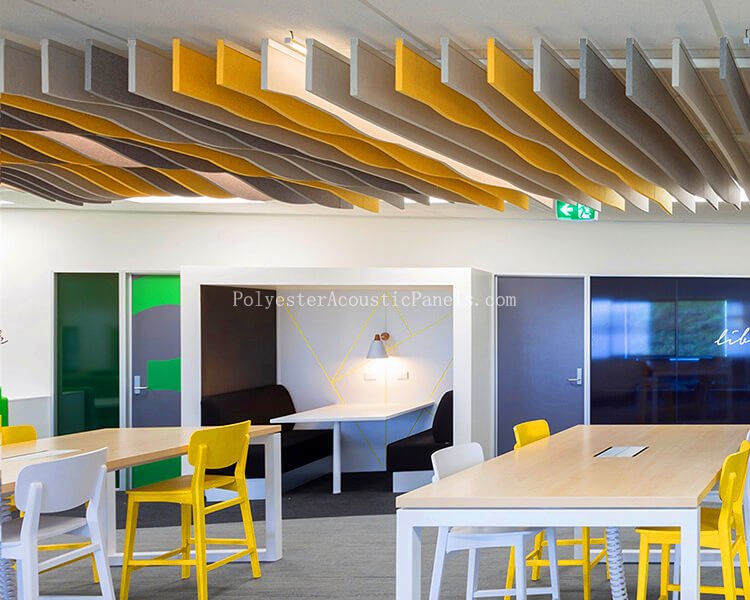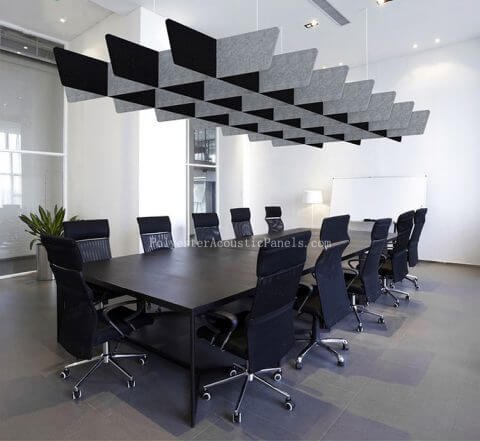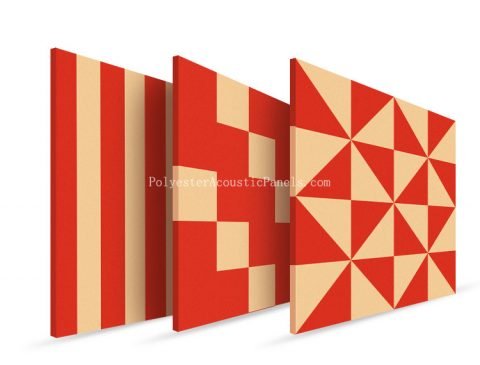Polyester Acoustic Panels Manufacturer
Acoustic Baffles
The polyester noise baffling material is a sound absorbing panel that is suspended vertically from the ceiling to absorb echoes. Our sound baffling material features a colored felt finish. We recommend hanging each polyester acoustic baffle about 300mm from each other for good sound absorption.
Polyester acoustic baffles are made by tumbling, needle punching and baking low melting and high melting polyester fibers. High density fiber networks absorb sound and reduce reverberation. Polyester felt is made only of high-melting polyester fiber, which is soft to the touch and bright in color. The polyester felt can be laminated on top of the polyester board.
Acoustic Baffles Specifications:
1. Material: polyester sound baffling materials
2. Standard size: 400mm x 1200mm (polyester baffle), etc.
3. Standard thickness: 9mm, 12mm (noise baffling materials)
4. Environmental testing: class E1 acoustical baffle along with PET material
5. Fire test: EN 13501-1 Class B, smoke classification S1, combustion droplet classification d0
6. Acoustic test: ISO 354-2003 NRC = 0.3-0.85

Acoustic Baffles Application
Sound baffling material for office
Acoustic ceiling panels for Sports Center
Gymnasium
Stadium
What is PET resin or PET?
PET stands for polyethylene terephthalate, a polyester (like a fabric). PET stands for polyethylene terephthalate, a form of polyester (like a fabric) ). It is extruded or molded into plastic bottles and containers for the packaging of foods and beverages, personal care products and many other consumer products.
Why is PET sometimes called polyester?
PET or polyethylene terephthalate is the chemical name for polyester. When PET is used in fiber or fabric applications, it is often referred to as “polyester.” When used in container and packaging applications, it is often referred to as “PET” or “PET resin.”




